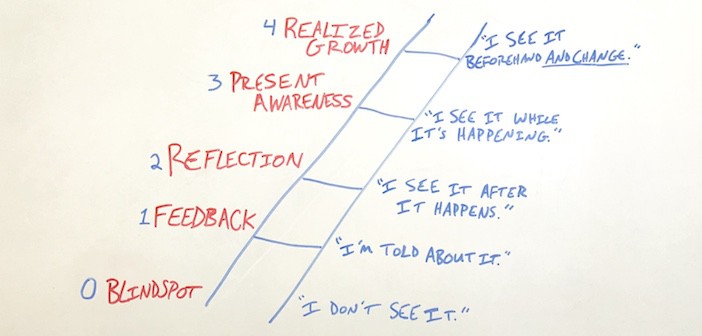It is impossible to lead a church with strategy if you are not leading yourself the same way. To improve self-leadership, many church leaders begin each year with resolutions to better themselves over the next 12 months. Yet many of those resolution are forgotten or fail over time. I am certainly no exception.
Nearly every resolution I’ve ever kept began as a resolution I lost a previous year.
I’ve made failed attempts to save money, eat better, workout, and grow spiritually. My eventual strides in those areas came only after feeling the weight of failed attempts. I imagine you’ve experienced this as well. The reason is simple.
Many resolutions fail because we have only a vision without a feasible strategy.
Life is a series of habits, good and bad. Leading yourself with strategy is a matter of identifying and creating the right ones. (Your church isn’t really all that much different.) What are your resolutions for 2016? Have you tried to improve in those areas before? How will this year be any different.
I’m certainly no expert on self-leadership strategies. But I have stumbled upon a few that work well for me. To kick off the new year, I thought I’d share the things I’ve found effective in the areas you may be setting your own resolutions. If you have a self-leadership resolution in the area of finance, health, or time management, I hope the strategies below help you make great strides this year.
Which of these is true for you? “In 2016, I want to…”
Set and Actually Keep a Budget
Reduce Stress and Stay Focused on the Right Things
Save Time and Money by Eating In More
Workout Consistently All Year Long
1. SETTING (AND ACTUALLY KEEPING) A BUDGET
Setting a budget is easy. Keeping a budget is challenging. That’s because it requires you to change some hardwired spending habits. Getting this one right is critical for church leaders. It’s hard to talk to people about stewardship if you’re not managing your own money well. Here’s what worked for Emily and I:
1. Start with the Envelope System: The Envelope System made popular by Dave Ramsey and others forces you to feel the financial weight of every purchase. Honestly, it’s a very cumbersome and inefficient system. But effectiveness is far more important than efficiency. We forced ourselves to use the envelope system for a few months to help us make intentional changes in our spending habits.
2. Transition to Mint.com when you’re ready: Once we became comfortable with our style of living, we traded envelopes for Mint.com. Mint automatically pulls our debit and credit card transactions into the system and categorizes them. We review it regularly throughout the month to re-categorize as needed and ensure we’re on track. It’s both effective and efficient.
A Word of Caution: If you’ve struggled to keep a budget, please don’t jump right into Mint. There’s no shortcut to changing habits. Start with the Envelope System and then shift to digital when you’re ready.
.
2. MANAGE YOUR TASKS, NOT JUST YOUR TIME
In my experience, people who believe they struggle with time management actually struggle with task management. They don’t waste time. They just invest it in the wrong areas. Here’s the process I use every week to ensure my time is invested where it will make the biggest difference.
1. Keep everything in one place: I use the free app Wunderlist to capture everything that I need to do. Even small errands go on the list. It might sound like I’m dependent on the tool. In reality, I’m freed up to be more present and focused in each moment. If you don’t have one place to track everything you need to get done, I highly recommend you try Wunderlist.
2. Star tasks weekly: At the start of each week, I look at everything on of my lists and star the items I want to accomplish. This moves them into a separate list, allowing me to ignore the non-starred items.
3. Asterisk tasks daily: Each morning, I take 5 minutes to asterisk the items I need to accomplish that day. Again, this makes sure I focus in on the things that are most important.
4. Re-prioritize at 3:30pm: I constantly bite off more than I can chew at the start of a day. So around 3:30pm, I take a realistic look at what is left on my list and ask, “What must I do today? What could I do tomorrow?” This helps me ensure I accomplish what I really need to and gives me permission to end my workday at a reasonable time without feeling behind.
If you don’t have a plan to manage your tasks, make 2016 the year you organize your work. You’ll be surprised by how much time you find.
3. SCHEDULE EVERY MINUTE OF YOUR DAY
Typically, leaders schedule meetings and nothing else. That leaves hours of unplanned time. I never want to leave an appointment asking myself, “What do I want to work on now?” To avoid that, I take these steps to keep my calendar full:
1. Schedule meetings with yourself: At the beginning of each week after I’ve prioritized my tasks, I like to review my calendar and fill the blank spaces with “meetings with myself.” I’ll schedule time for everything including work projects, quiet times, and workouts.
2. Reschedule intentionally: Undoubtedly, new items pop up throughout the week that require me to change my schedule. But in those moments, I’m forced to make an intentional decision about what I will cut out of my week. That ensures my focus stays on what’s most important.
4. EATING IN WITH FREEZER MEALS
.
1. Plan Meals Once a Month: There are incredible online resources that make this very easy. Emily’s favorite is New Leaf Wellness. She chooses a set of recipes that come with a simplified grocery list. Here’s a sample PDF with 5 of our favorite meals.
2. Prep Meals Once a Month: We spend 2-3 hours one Saturday a month prepping meals. We don’t cook anything! We simply portion the ingredients into Ziploc freezer bags. On each bag we write the name of the meal and how long it is supposed to cook in the Crock Pot. (It’s dummy-proof which is perfect for me.)
3. Pour a Frozen Meal into a Crock Pot each morning: Simply place the frozen meal in a Crock Pot to cook for the allotted time. We come home each evening to a fully prepared meal. At most, we’ll cook a frozen vegetable in the microwave.
We use a Programmable Crock-Pot so we don’t have to worry about being home when it’s done. For just 2-3 hours one Saturday a month, we save ourselves countless time, hundreds of dollars, and plenty of stress in busy evenings.
5. SELF-ACCOUNTABILITY FOR WORKOUT GOALS
2015 was the year I finally got into a solid workout rhythm for the first time in my life. I’m excited to continue that in 2016. Here’s what’s making the difference:
1. MyFitnessPal: This free app that allows you to easily track the calories you consume and burn each day. The instant accountability is motivation to stay in the gym.
2. Schedule a Race: I always workout better when I have a race scheduled to prepare for. This year, I’m registering for the Columbus Half Marathon. Doing so provides a new sense of accountability. Find a race in your area to help keep your own workouts going.
I hope these strategies inspire some ideas for you as you lead yourself with strategy in 2016. I’ll be the first to admit that I don’t hold to each of these perfectly. There are weeks when I fail to prioritize well, eat out too much, or lose track of our budget. Each time that happens, I’m reminded of the value of a strategy. Take a look at each of your new year’s resolutions and identify the steps you need to take to ensure they don’t become a thing of the past.



